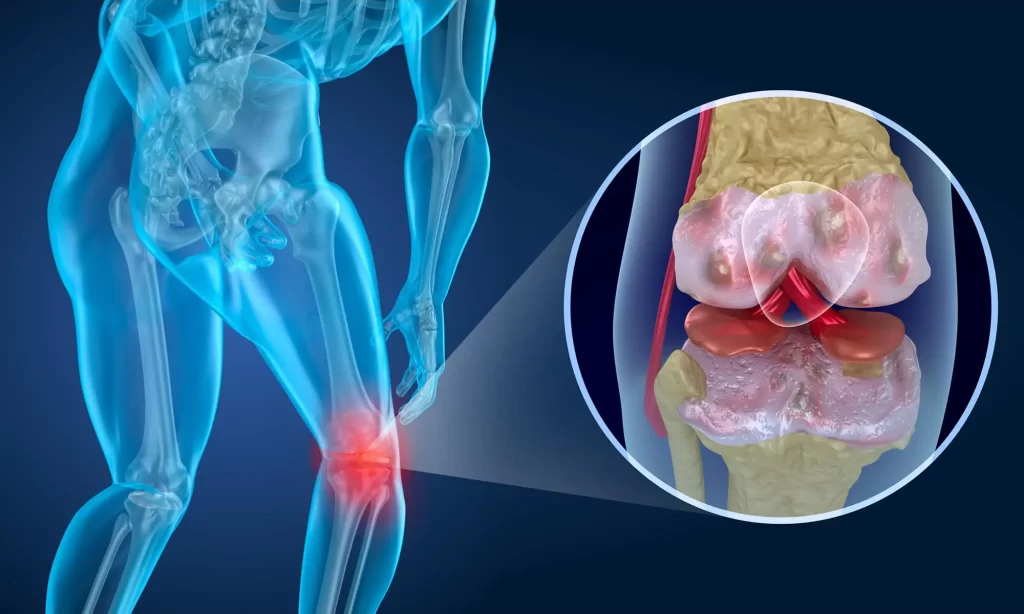
Advanced Regenerative Medicine, Medical Weight Loss, and Wellness Treatments.

Stem cell therapy has received much attention recently, but what exactly is it? Is it an effective treatment for knee pain, and how does it work?
Knee pain affects more than 25% of adults worldwide and can affect people of any age. While physical therapy and prescription medications can effectively treat mild pain, those suffering from severe pain may require surgery.

Stem cell therapy may be an option for patients struggling to manage knee pain but who want to postpone knee replacement surgery. Renew Medical Centre wants to help patients understand stem cell treatment, its uses and limitations, and how it may help some find relief from knee pain caused by injury or arthritis.
When you choose this treatment, you can be confident that you are opting for a form of regenerative medicine that has been thoroughly researched and is a safe and effective way to heal the body naturally.
Because the stem cells are derived from your own body rather than a different source, when re-injected into the damaged joint or tissue, your body will respond positively and use those stem cells to heal, regenerate, and restore function to the area. Because the stem cells are derived from your body, you will not experience any adverse side effects.
If you’ve tried traditional techniques or medications to heal damaged tissue or joints with little to no success, it may be time to look within your body for ultimate healing. We can assist you in learning more about this type of regenerative medicine. To learn more, please contact Renew Medical Centre today.
You may be skeptical of stem cells if you’ve heard about the controversy surrounding how they’re obtained. Some stem cells are derived from donated blastocysts (early-stage embryos) that are only a few days old but are not used for ortho-biologic treatment.
Instead, ortho-biologic therapy for knee pain commonly uses stem cells extracted from adult patients’ bone marrow and other tissues.
A doctor will take stem cell samples from other parts of your body and reimplant them into an injured area during treatment. For knee pain, this could entail extracting bone marrow or fat tissue cells and injecting them into knee joints.
Before beginning treatment, your doctor will always discuss the source of your stem cells and never inject you with anything you do not consent to.
This answer depends on the person’s pathology, the part of the body being treated, and how damaged that area is. For many patients, this will be the final treatment they require for their injury. It allows them to avoid surgery and resume their active lifestyle. If there is extensive damage or their body is slow to heal, others may require several rounds of stem cell therapy to be pain-free.
Because each individual’s unique situation, our nationally recognized specialists will determine whether stem cell therapy is the best treatment option for your condition. Your doctor will spend quality time with you during your comprehensive consultation to understand your overall health, underlying medical needs, lifestyle, job requirements, and expectations.
This allows us to create your personalized treatment plan and, in some cases, combine regenerative therapies to achieve the best possible outcome for you.
While some patients experience relief almost immediately, we typically clear patients for physical activity after 4-6 weeks. With this timeline, the body will have had enough time to heal and regenerate healthy cells for the damaged area.
There are numerous milestones you will reach six weeks post-treatment. You’ll be able to walk within 48 hours, have a full range of motion almost immediately, and be back at work within a few days of treatment.
Both approved and unapproved stem cell therapies have side effects. Patients contemplating unapproved stem cell therapy should know that these procedures carry significant risks, which a qualified care team may not manage. Even injecting a person’s tissue into another body part has resulted in severe illness and, in some cases, blindness.
Therapies provided by stem cell clinics are not without financial risk. Because these procedures are typically not covered by insurance, patients must pay significant out-of-pocket expenses with no guarantee of improved health.
People choose stem cell therapy as a viable option to postpone or even avoid surgery entirely. Without surgery or medication, stem cell therapy can improve your function and mobility by addressing the source of your pain. When compared to surgical options, it can also shorten your recovery time.
The time it takes to recover from surgery, and stem cell therapy is incomparable. Stem cell therapy is always performed as an outpatient procedure, with the entire process taking about three hours from procedure prep to patient discharge.